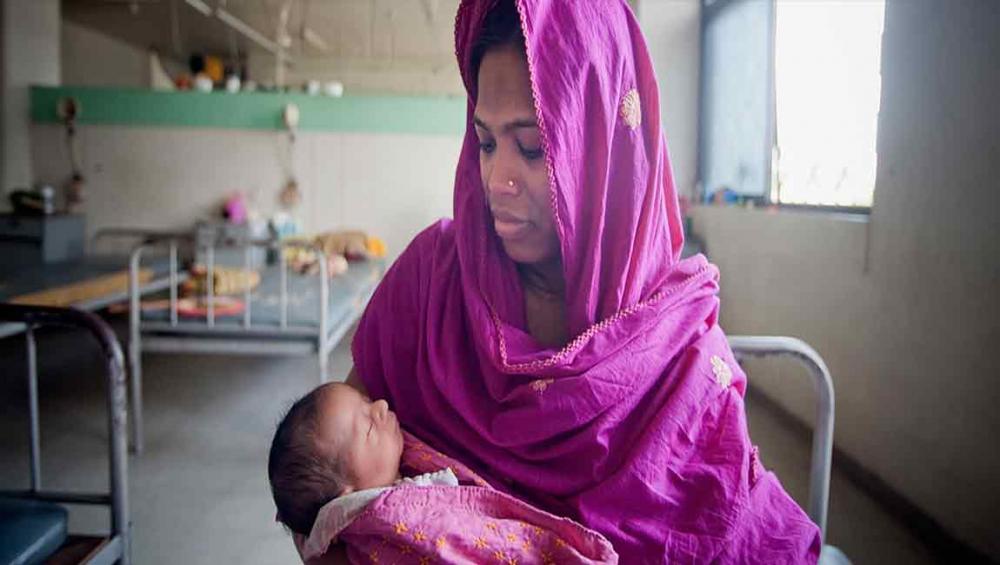Just Earth News | @JustEarthNews | 16 Feb 2018, 04:57 am Print

Kibae Park
New York, Feb 16 (JEN): The United Nations World Health Organization (WHO) has issued new guidelines on global care standards throughout labour and immediately after childbirth aimed at reducing the use of needless and potentially harmful routine clinical and medical interventions.
“We want women to give birth in a safe environment with skilled birth attendants in well-equipped facilities. However, the increasing medicalization of normal childbirth processes are undermining a woman’s own capability to give birth and negatively impacting her birth experience,” said Princess Nothemba Simelela, the Assistant Director-General at the UN World Health Organization (WHO) for Family, Women, Children and Adolescents.
Worldwide, an estimated 140 million births take place every year and most of these occur without complications for women and their babies.
However, according to WHO, over the past 20 years, health practitioners have increased the use of interventions that were previously only used to avoid risks or treat complications, such as oxytocin infusion to speed up labour or caesarean sections. Studies show that a substantial proportion of healthy pregnant women undergo at least one clinical intervention during labour and birth.
“If labour is progressing normally, and the woman and her baby are in good condition, they do not need to receive additional interventions to accelerate labour,” added Dr. Simelela.
Based on 56 evidence-based recommendations, the new guidelines include having a companion of choice during labour and childbirth; ensuring respectful care and good communication between women and health providers; maintaining privacy and confidentiality; and allowing women to make decisions about their pain management, labour and birth positions and natural urge to push, among others.
Recognizing that every labour and childbirth is unique and that the duration of the active first stage of labour varies from one woman to another, the guidelines state that the previous benchmark for cervical dilation rate at 1 cm/hr during the active first stage of labour (as assessed by a partograph or chart used to document the course of a normal labour) may be “unrealistic” for some women and is inaccurate in identifying women at risk of adverse birth outcomes.Every labour is unique and progresses at different rates
The guidelines emphasize that a slower cervical dilation rate alone should not be a routine indication for intervention to accelerate labour or expedite birth.
Furthermore, while most women want a natural labour and birth, they also acknowledge that birth can be an unpredictable and risky event and that close monitoring and sometimes medical interventions may be necessary.
When a medical intervention is wanted or needed, “the inclusion of women in making decisions about the care they receive is important to ensure that they meet their goal of a positive childbirth experience,” said Ian Askew, the head of WHO Department of Reproductive Health and Research.
High quality and dignified care for all women
The UN agency also noted that with more women give birth in health facilities with skilled health professionals and timely referrals, they deserve better quality of care.
Estimates show that about 830 women die from pregnancy- or childbirth-related complications around the world every day – the majority of which can be prevented with high-quality care.
Additionally, disrespectful and non-dignified care is prevalent in many health facilities, violating human rights and preventing women from accessing care services during childbirth. In many parts of the world, the health provider controls the birthing process, further exposing healthy pregnant women to unnecessary medical interventions that interfere with the natural childbirth process.
“Achieving the best possible physical, emotional, and psychological outcomes for the woman and her baby requires a model of care in which health systems empower all women to access care that focuses on the mother and child,” underscored WHO.
- Nigeria is now the first country to introduce 'revolutionary' meningitis vaccine: WHO
- Pregnancy accelerates biological ageing in healthy, young adult population, finds shows
- Hepatitis virus killing 3500 daily, warns WHO report
- Study finds oral vaccine for UTI is potential alternative to antibiotics
- Suspected food poisoning leaves student dead in Vietnam






